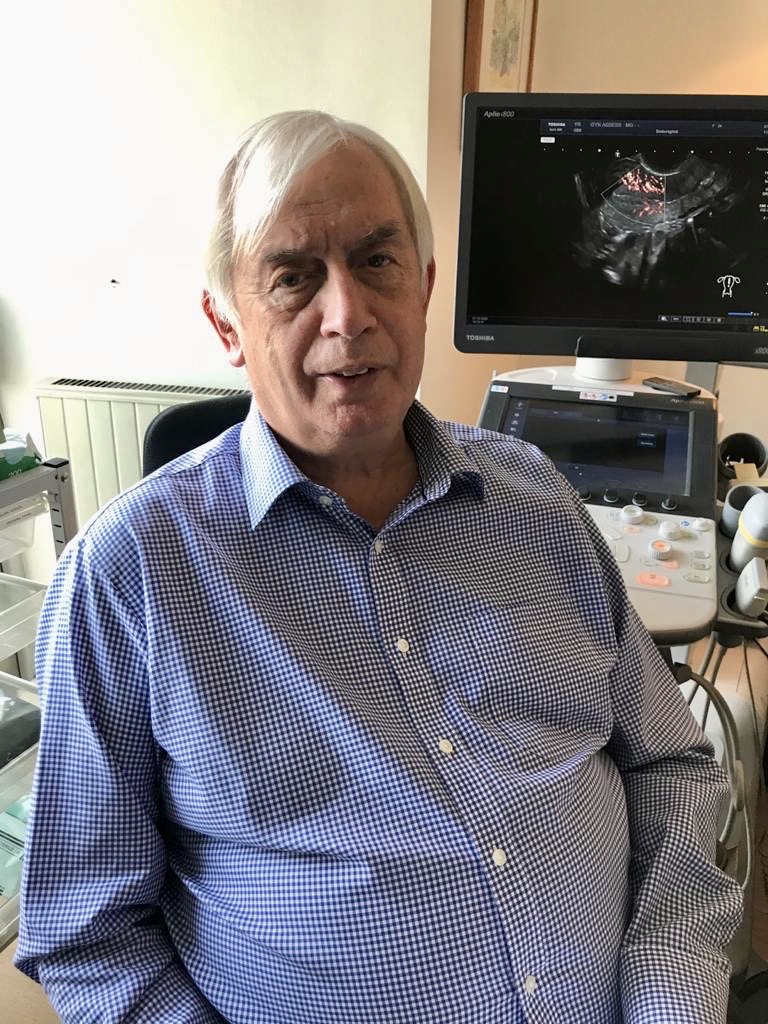We sat down with Bill Smith who talked about his extensive work in women’s healthcare and infertility.
- How and why did you get into this field of work?
“I was one of the first people involved in the early development of medical ultrasound. I trained as a radiographer at the Royal Free Hospital London. I came across this new thing called ‘ultrasound’. Following initial experience in this field, I accepted an ultrasound post at King’s College Hospital with the world-leading expert Professor Stuart Campbell and trained with him. I chose this pathway as an alternative to entering medical school.
I returned to the Royal Free and was invited to take over as head of obstetric and gynaecological ultrasound services. From there was introduced to and became increasing involved in the world of infertility. I worked very closely supporting consultants dealing with first-line infertility problems. In addition I was part of the team to produce one of the first test tube babies worldwide.
I was very involved in introducing and promoting the utilisation of medical ultrasound in key areas of reproductive medicine and general gynaecology such as detection of uterine and ovarian tumours as well as endometriosis and miscarriage. During this time I was involved in developing transvaginal scanning. I am recognized worldwide for my pioneering work in establishing this technique as a crucial part of women’s healthcare generally.

I worked with Professor Ian Craft in the world’s biggest IVF unit during this period. Through this work I became extremely aware of just how tough it can be being a female in this world. From understanding the broad scope of gynaecological issues, seeing how often they go undiagnosed and untreated and how many women just get on with their everyday lives – it really is incredible.
But it isn’t just women I see – over the many years I have worked in this field I have developed my expertise in general medical scanning, as I very quickly realized that gynaecological disease is not limited just to the pelvis. This brought me more into the male arena and I have many male patients for whom we check the testes, prostate etc. as well as general healthiness.
2. What is the biggest misconception about what you do?
The biggest misconception about what we do at CDS is the fact that over the last decade or so there have been huge developments in ultrasound capabilities but it still remains somewhat underused and badly practiced. This particularly applies in the treatment of functional and hormonal problems in gynaecology. This might include abnormal uterine bleeding and/or pelvic pain, as well as monitoring of HRT and menopausal problems.
3. What are you most proud of?
I’m most proud of developing and promoting transvaginal scanning (TVS) as the principal diagnostic investigation in many areas of women’s healthcare. It is now used worldwide and in fact I was one of the principal speakers at the first World Congress in Transvaginal Ultrasound in Washington, USA in 1988.
This method of scanning has significantly increased diagnostic capability across all aspects of women’s healthcare which currently includes advanced 3D, colour Doppler scanning etc.
Because of the increased detail we get from TVS, we have recognised how many of these gyneacological disorders are functional, particular linked to hormonal factors. Sadly this fact is not recognised by many clinicians. Endometriosis is a good example. Approximately 1 in 10 women will suffer from this. The major symptoms include unpleasant periods and irregular vaginal bleeding, extensive pain, feeling bloated, breast tenderness, headaches and tiredness etc. Our experience suggests that many of these symptoms are caused by excessive oestrogen. I’m therefore very proud of opening up these issues to the clinical world.
4. What would you change about current NHS fertility treatment?
The NHS is wonderful, but sadly perhaps doesn’t have the time to afford patients the focus that CDS can give them. They are under too much pressure and therefore might find it difficult to utilise the full potential of ultrasound as outlined above.
5. What would your message be to someone who is thinking of coming to see you?
Come and see us with an open mind – please forget what you’ve read on Google. We work together with patients to identify particular issues and will address those issues together. It is important to ensure patients are fully informed and provided with accurate information. Many of the issues we encounter are as much emotional as they are clinical.
Working on infertility since the late 1970s, whether it is natural cycle monitoring or IVF egg collection, I have been involved in the safe arrival of thousands of babies. I’m extremely grateful that I have been allowed to be part of helping so many couples achieve their dream of becoming parents.
